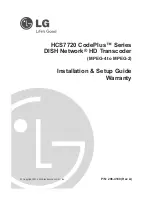
45
11
DIGITAL MODE OPERATION
11
■
Digital voice mode operation
q
Set the desired frequency in VFO mode. (pgs. 13, 14)
• Select output power, if desired. (p. 15)
w
Push
[A•
FUNC
]
then
[0•
OPT
]
to enter
OPTION SET MODE
,
then push
[
Y
Y
]
or
[
Z
Z
]
several times to select the digital se-
lect mode.
• “DG” appears.
e
Rotate
[VOL]
to turn the digital mode ON.
r
Push
[
Y
Y
]
once to select the your own call sign select mode.
• “myC” appears.
t
Push and hold
[0•
OPT
]
for 1 sec. then rotate
[VOL]
to se-
lect the desired your own call sign channel, if you have
programmed several call signs.
• After selecting the your own call sign, push
[0•
OPT
]
to return to
OPTION SET MODE
.
D
D
When sending a CQ
(continued from step
t
)
y
Select “CQ” as the station call sign.
- Push
[
Y
Y
]
or
[
Z
Z
]
several times to select the call sign se-
lect mode.
• “yUC” appears.
- Push and hold
[0•
OPT
]
for 1 sec. then rotate
[VOL]
to se-
lect the desired channel.
- Push and hold
[0•
OPT
]
for 1 sec. to set “CqCqCq.”
- Push
[
✱
•
ENT
]
(or
[D•
CLR
]
) to exit
OPTION SET MODE
.
u
Push and hold
[PTT]
to transmit and speak into the micro-
phone at normal voice level.
• Transmit indicator appears and the RF meter shows the output power.
i
Release
[PTT]
to return to receive.
• The other station call sign will be received.
• Received call signs can be stored into the received call record
automatically. See page 46 for details.
NOTE:
In the digital mode operation; when “BUSY” indi-
cator appears but no sound comes out the speaker, it may
be caused by the interference of analog FM mode. In this
case, to prevent interference of analog FM mode, set the
digital monitor setting (p. 49) to “An (analog)” then listen
on the channel before transmitting by pushing
[MONI]
.
Appears
















































